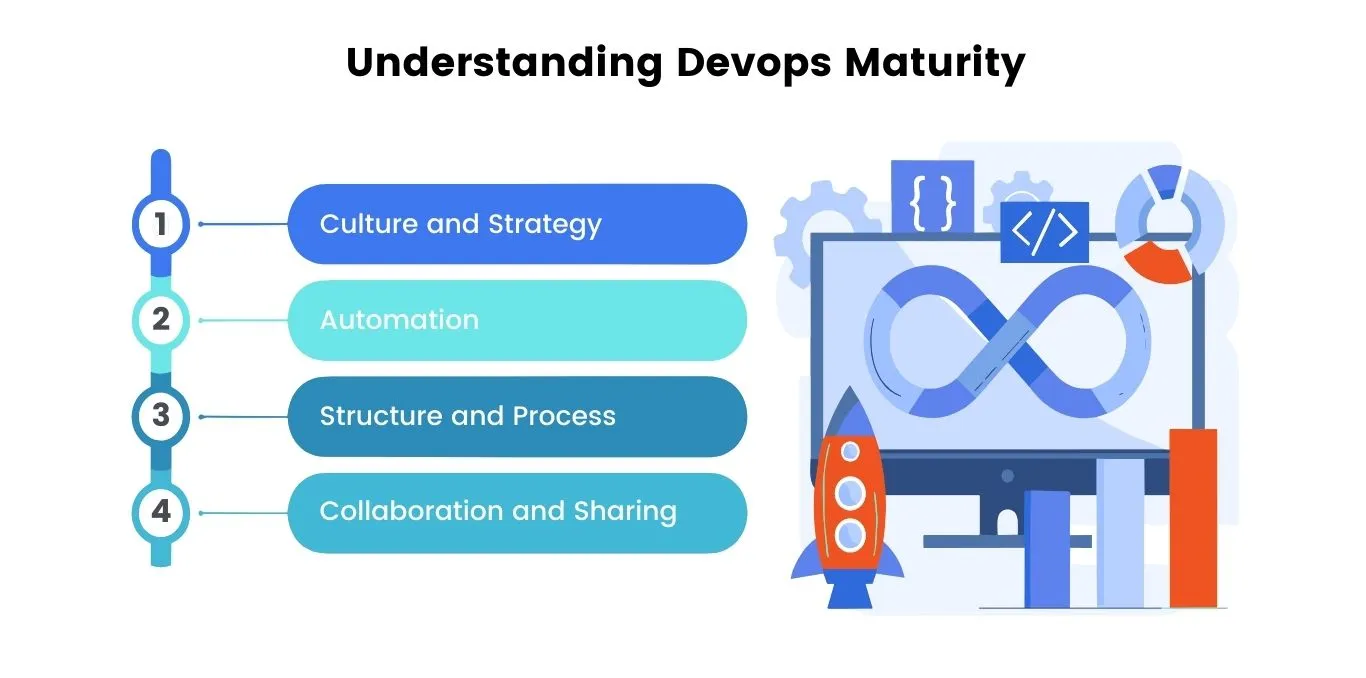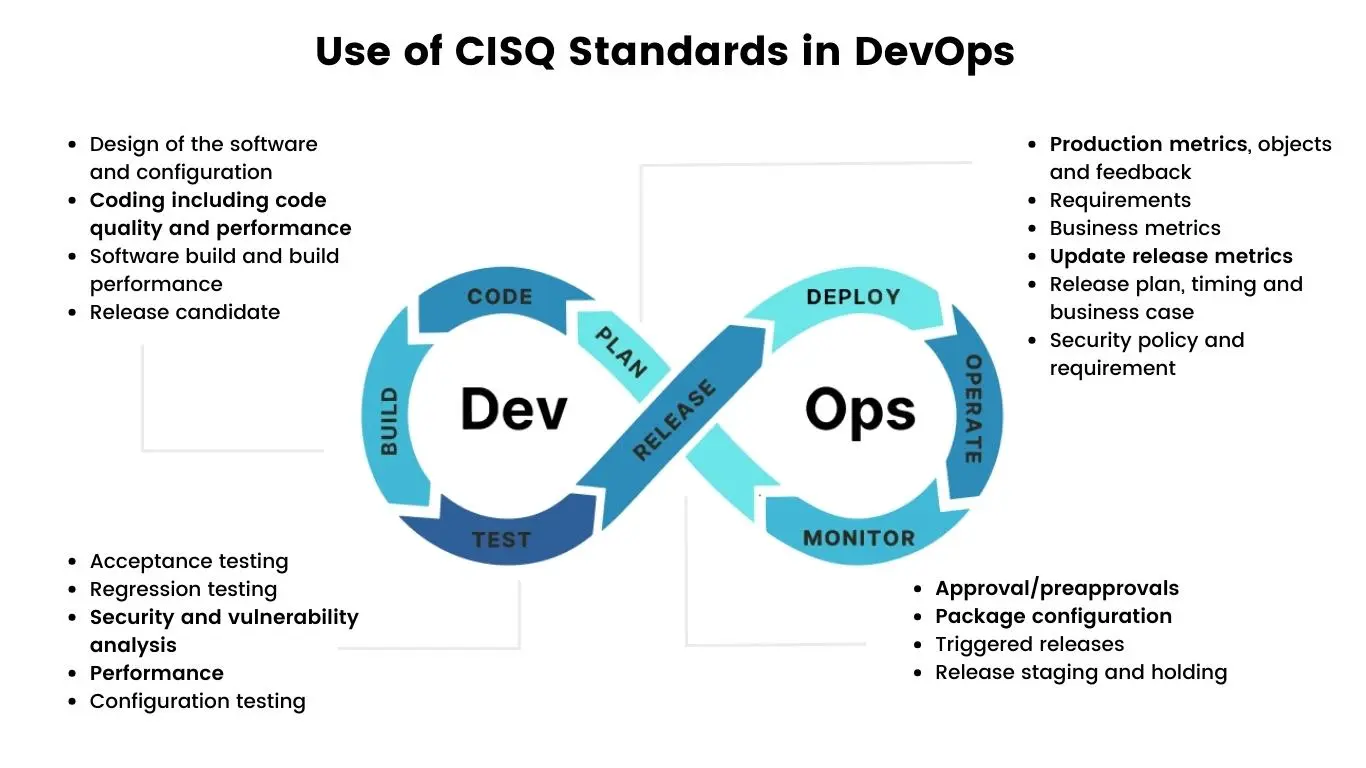Outsourcing to Czechia

How much does it cost to hire developers in Czechia?
Dec 2nd 25 - by Devico Team
Find out how much it costs to hire software developers in Czechia in 2025. Compare hourly rates, roles, and factors that impact pricing.
Hire
Hire by role
Hire Front-end developers
Hire Back-end developers
Hire Full-stack developers
Hire Android developers
Hire iOS developers
Hire Mobile developers
Hire AI engineers
Hire ML engineers
Hire Automation QA engineers
Hire Blockchain developers
Hire Data engineers
Hire Cloud engineers
Hire by skill
Hire JavaScript developers
Hire TypeScript developers
Hire Ruby on Rails developers
Hire React Native developers
Hire Flutter developers
Hire Golang developers
Hire React.js developers
Hire Python developers
Hire PHP developers
Hire .NET developers
Hire Java developers
Hire Laravel developers

DevOps
November 20, 2023 - by Devico Team
Summarize with:
That's a weird title for a technical article, isn't it? It immediately brings to mind memes about relationships, dating, and red flags themselves. Surprisingly, the red flag concept is quite applicable to DevOps implementation as well. How? Let's put all the cards on the table.
For the past few years, the term "DevOps" has become synonymous with innovation, agility, and efficiency. And many organizations put the question “What are some of the essential benefits that we can realize with the adoption of DevOps principles” to the main corner. That’s because DevOps principles, which bridge the gap between development and operations, have redefined how software is built, tested, and delivered. Yet, as organizations navigate the dynamic terrain of technology and digital transformation, it's essential to recognize that DevOps is not a one-size-fits-all solution. Also, it’s important to understand what DevOps is not.
DevOps embodies a set of principles and practices that champion collaboration, automation, and continuous improvement. Its significance in modern software development cannot be overstated, as it enables rapid delivery, enhanced quality, and improved collaboration. However, it's important to acknowledge the inherent flexibility and adaptability of DevOps principles.
So there, we will signal with red flags about situations where embracing a modest or even no amount of DevOps might be more appropriate. The following text may seem to be a boring breakdown, but it’s the most convenient way for us to get across the message and for you to comprehend the idea.

DevOps, with its emphasis on continuous integration and continuous delivery (CI/CD), champions the frequent release of software updates. This approach offers several benefits, for instance:
Rapid Response to User Needs: Easy-peasy: your product or service goes to the market, gets used, receives feedback, and gets the chance to get better. And the main step toward improvement is frequent releases. They are the best way to respond to soaring demands and requirements.
Improved Software Quality: If your devs are afraid of QAs, well, that is fine. At least, this fear will keep them in shape. Okay-okay, a little joke. To be more serious, regular releases just encourage testing, reducing the likelihood of critical defects reaching production. This results in higher software quality and reliability (and devs’ PTSD).
Enhanced Collaboration: When there is teamwork, any challenge doesn’t seem impossible to complete. Frequent releases foster collaboration between development and operations teams. They work together closely to automate deployment pipelines and ensure smooth releases.

Yet, it's essential to recognize that key factors of the DevOps maturity model are not the postulate, and not all businesses or projects require frequent releases. In scenarios where the following conditions apply, irregular releases may be more suitable:
1. Stable Software: If your software is mature and serves its purpose effectively with minimal changes, frequent releases may introduce unnecessary complexity. In such cases, infrequent, well-planned updates might suffice.
2. Complex Regulatory Requirements: Certain industries, like healthcare and finance, face stringent regulatory compliance. Meeting these requirements often involves extensive testing and validation, which can delay release cycles. Irregular releases ensure thorough compliance checks.
Healthcare Software: Healthcare software, particularly electronic health records (EHRs), must adhere to strict compliance standards. Frequent updates could disrupt clinical workflows and jeopardize patient safety. In this industry, well-planned, irregular releases that undergo rigorous testing and validation are preferred.
Aerospace Engineering: Aerospace projects demand meticulous testing and verification. Frequent software updates can introduce risks in safety-critical systems. Aerospace organizations often follow a structured release cycle, aligning with industry standards.
Financial Systems: Financial institutions deal with sensitive data and regulatory requirements. Frequent changes can lead to compliance challenges and increased security risks. Irregular releases allow for comprehensive testing and compliance checks.
In these scenarios, embracing DevOps principles doesn't necessarily mean adhering to a continuous release cycle. Instead, organizations prioritize stability, security, and compliance, tailoring their release strategies to suit the unique demands of their industries and projects.
DevOps is deeply rooted in the principle of continuous improvement. Simply put, companies embrace change, refine processes, and consistently enhance software. Netflix is known for its strong DevOps culture. Obviously, the streaming giant is constantly looking for ways to improve its service. For example, it uses DevOps practices to deploy new features and bug fixes to users thanks to continuous user feedback and activities like Bug Bounty. This allows Netflix to quickly respond to user feedback and improve its service.
This relentless pursuit of improvement offers several advantages:
Adaptation to Evolving Needs: User needs, market dynamics, and technological trends evolve rapidly. Continuous improvement ensures that software remains aligned with these changing requirements.
Enhanced Competitiveness: Organizations that actively seek to improve their software gain a competitive edge. They can respond swiftly to market disruptions and deliver innovative features that capture user interest.
Mitigation of Technical Debt: Regular improvements help address technical debt—the accumulation of suboptimal code or design decisions. This prevents technical debt from becoming a major obstacle to future development.
While being content with the current software landscape might seem appealing, it can have significant implications:
Stagnation: A lack of motivation to enhance software can lead to stagnation. Over time, this may result in software that becomes obsolete or less competitive.
Missed Opportunities: The most frequent thing that was mentioned by aged people before passing away is missed opportunities. Sounds weird but the same story with software. Contentment can blind organizations to opportunities for innovation and efficiency gains. They may overlook valuable feedback from users and fail to capitalize on emerging technologies.
Security Risks: Failing to update and improve software can lead to security vulnerabilities. Cyber threats are constantly evolving, and outdated software is more susceptible to attacks.
Legacy Systems: Organizations heavily reliant on legacy systems might resist DevOps due to the complexity of integrating modern practices into outdated software. Contentment with these systems can hinder the adoption of DevOps practices like automation and continuous delivery.
Highly Regulated Industries: Some industries, such as banking or healthcare, operate under strict regulatory frameworks. This can foster a sense of contentment with existing, compliant software. Organizations in these sectors may be reluctant to embrace DevOps due to the perceived risks associated with change.
Risk-Averse Cultures: Organizations with risk-averse cultures might prioritize stability over innovation. Such cultures can foster a sense of contentment with existing software, as changes are perceived as potential sources of disruption.
DevOps thrives on speed, automation, and continuous delivery, making it ideally suited for agile software development. However, in industries subject to strict regulatory oversight, such as finance, healthcare, and aviation, adhering to these regulations can pose unique challenges in a DevOps environment:
Data Security and Privacy: Regulatory sectors often require rigorous data protection and privacy measures. DevOps, with its rapid development and frequent deployments, can introduce vulnerabilities if not managed carefully.
Auditability and Traceability: Regulatory compliance often demands extensive documentation and traceability. The fast pace of DevOps can make maintaining comprehensive records a challenging task.
Change Control: Strict change control processes are common in regulated sectors to ensure that changes are well-documented and tested. DevOps' emphasis on frequent changes can conflict with this requirement.
Sorry for repeating the same things, but DevOps emphasizes agility, automation, and rapid deployments. While these principles drive innovation and efficiency, they can potentially conflict with regulatory compliance.
Frequent Changes: Regulated sectors often prefer stability over frequent changes. DevOps' continuous integration and continuous delivery (CI/CD) pipeline can introduce new features or changes rapidly, creating challenges in maintaining compliance.
Lack of Formality: It’s not obligatory, but DevOps may prioritize informal communication and collaboration over extensive documentation. In regulatory environments, the absence of formal records and documentation can hinder compliance efforts.
Testing and Validation: Regulated industries require rigorous testing and validation. DevOps' rapid pace may not allow for the extensive testing and validation required to meet regulatory standards.
To address these conflicts, organizations in stringent regulatory sectors often adopt DevOps practices while integrating robust compliance measures. This may involve additional layers of testing, documentation, and change control within the DevOps pipeline. The goal is to strike a balance between the speed and innovation of DevOps and the need for regulatory compliance, ensuring that software remains secure, reliable, and compliant with industry-specific regulations.
Obviously, regulations vary depending on the region. Below, we listed the most common industries in the US and the specific standards they must match.

Healthcare: The Health Insurance Portability and Accountability Act (HIPAA) in the United States mandates strict data protection and privacy standards for healthcare organizations. DevOps teams in healthcare must ensure that electronic health records (EHRs) and other medical software comply with HIPAA.
Finance: The financial sector faces stringent regulations, including the Sarbanes-Oxley Act (SOX) and Basel III. SOX requires financial companies to implement internal controls and reporting processes. Basel III sets capital adequacy and liquidity standards for banks.
Aerospace and Aviation: The Federal Aviation Administration (FAA) oversees aviation regulations, including the FAA Part 21 regulations for aircraft certification. DevOps practices must align with these regulations to ensure airworthiness.
Mergers and acquisitions (M&A) often entail significant changes in organizational structures, cultures, and processes. These changes can disrupt established DevOps practices in several ways.
Cultural Differences: Different organizations involved in M&A may have distinct DevOps cultures and practices. Merging these cultures can lead to resistance, confusion, and inefficiencies.
Tooling and Technology Integration: M&A activities may require the integration of disparate toolchains and technology stacks. Ensuring compatibility and interoperability between these tools can be challenging.
Process Misalignment: DevOps relies on well-defined processes, and M&A can introduce process misalignment and inconsistencies. This can lead to bottlenecks and delays in software delivery.
Toolchain Integration: Organizations involved in M&A may use different DevOps tools and platforms. Integrating these tools seamlessly can be complex, especially when they serve similar purposes, like CI/CD pipelines or monitoring solutions.
Cultural Clash: M&A often involves teams with varying DevOps maturity levels and cultural norms. Bridging these cultural gaps and fostering collaboration can be challenging.
Process Harmonization: Merging different DevOps processes and workflows can lead to conflicts and inefficiencies. Teams may struggle to align their approaches and standards.
1. Early Planning: Start planning for DevOps integration as soon as possible in the M&A process. Identify potential challenges and develop a clear integration roadmap.
2. Cultural Integration: Invest in efforts to harmonize DevOps cultures. Encourage open communication and collaboration between teams from different organizations. Establish common DevOps principles and values.
3. Tool Rationalization: Assess the existing DevOps toolchains and rationalize them to eliminate redundancy. Select tools that best align with the integrated organization's goals and processes.
4. Process Alignment: Standardize DevOps processes and workflows. Define clear roles and responsibilities, and ensure that teams understand and follow the integrated processes.
5. Training and Upskilling: Provide training and upskilling opportunities for teams to adapt to new tools and processes. This can help bridge knowledge gaps and ensure a smooth transition.
6. Continuous Improvement: Embrace a culture of continuous improvement within the integrated organization. Regularly assess the effectiveness of DevOps practices and make adjustments as needed.
M&A activities can indeed disrupt DevOps practices, but with careful planning, communication, and a commitment to harmonizing cultures and processes, organizations can navigate these challenges and emerge with a more robust and efficient DevOps ecosystem.
The salt of DevOps culture is modernization and agility, making it crucial to assess and upgrade outdated processes. There are several reasons why you could do with modernization. We can name at least three.
1. Efficiency and Speed: Modern processes leverage automation and streamlined workflows, enabling faster development and deployment cycles.
2. Cost Reduction: Outdated systems often come with high maintenance costs. Modernization can lead to cost savings through cloud adoption and resource optimization.
3. Enhanced Security: Legacy systems are vulnerable to security breaches due to outdated security protocols. Modernization allows for the implementation of robust security measures.
You can encounter several challenges connected to legacy systems in a DevOps environment. At least three (again!).
1. Inflexibility: Legacy systems often lack the flexibility required for rapid changes and automation, hindering the core tenets of DevOps.
2. Integration Complexity: Integrating legacy systems with modern DevOps toolchains can be complex, leading to compatibility issues.
3. Limited Scalability: Legacy architectures may struggle to scale efficiently to meet growing demands, causing performance bottlenecks.
1. Incremental Modernization: Rather than a complete overhaul, organizations can adopt an incremental modernization approach. Identify critical components that require updates and prioritize them.
2. Cloud Adoption: Moving to the cloud can enhance flexibility and scalability. Organizations can gradually migrate workloads to cloud environments while modernizing processes.
3. Containerization: Containerization technologies like Docker and Kubernetes allow legacy applications to run in modern environments, facilitating easier integration with DevOps practices.
4. Microservices: Breaking monolithic applications into microservices can make them more manageable and conducive to DevOps practices.
Catching-up example: A large financial institution with legacy mainframe systems wanted to embrace DevOps practices. They started by modernizing their data processing systems, gradually transitioning to microservices architecture. This step allowed them to integrate modern DevOps tooling and practices while ensuring data security and compliance.
DevOps stands as a powerful approach to streamline processes, enhance collaboration, and drive innovation. Yet DevOps isn't a one-size-fits-all solution. We explored five red flags that signal when DevOps might not be the ideal fit for your organization. It’s not right to set out one as a main, but we can mark contentment with the current software as one of the most significant points. Other scenarios partly flow from this one.
DevOps, while transformative, should be tailored to an organization's unique needs and circumstances. It's crucial to align DevOps with organizational goals, realities, and constraints. By carefully evaluating the landscape and addressing potential red flags, organizations can make informed decisions and embark on a DevOps journey that maximizes efficiency, innovation, and success.
Outsourcing to Czechia

Dec 2nd 25 - by Devico Team
Find out how much it costs to hire software developers in Czechia in 2025. Compare hourly rates, roles, and factors that impact pricing.
Outsourcing to Czechia

Nov 25th 25 - by Devico Team
Compare Czechia and Poland for software outsourcing in 2025. Discover costs, talent, infrastructure, and which country fits your project best.
Outsourcing to Czechia

Nov 18th 25 - by Devico Team
A complete guide to outsourcing software projects to Czechia, learn about costs, talent, benefits, and how to build successful partnerships in 2025.